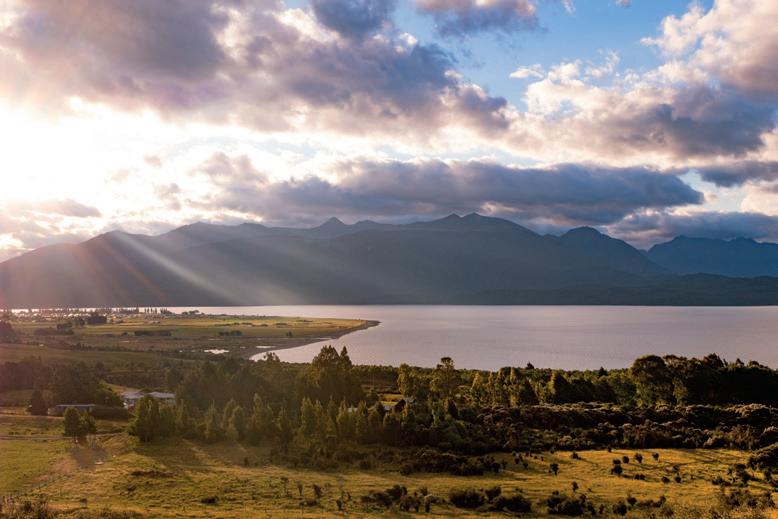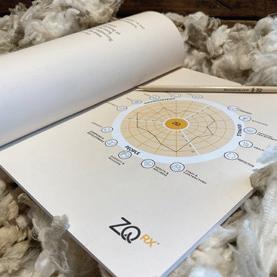
7 minute read
When biodiversity thrives the environment thrives
Biodiversity has become one of modern agriculture’s bywords. What does it mean though, and why is it important? It’s easy to get overwhelmed by the words, the regulations and the changes but bringing it back to your farm or business can make it easier to get a handle on.
Farmers are some of the best conservationists. They know that biodiversity is essential for a healthy ecosystem, farm, region and community. They are in an excellent position to manage significant native biodiversity on their land as they know the outcomes vary within farms, across districts and between regions. It’s vital for farmers to understand the part we can play in building resilience. Economic viability and biodiversity are inextricably linked so our role is to work with industry to make sure we have the capability and products to support our custodians of the land. We owe it to upcoming generations to ensure the biodiversity within our environment is thriving. One person dedicated to supporting and engaging landowners with biodiversity is David Norton, a Canterbury University Professor and passionate ecologist and conservationist. I spoke to him about the importance of biodiversity and what farmers can do to build it into their management plan.
Thought leadership from Farmlands’ Head of Sustainability and Land Use, Katie Vickers, on the importance of biodiversity on and off-farm.
What is biodiversity?
David: Biodiversity can be understood in three ways. In New Zealand, we have both exotic (introduced) and native biodiversity. Native biodiversity encompasses species that grow naturally in New Zealand, for example tōtara trees and kiwi. Biodiversity is also about genetic variation within those species, so not just having one individual kiwi or tōtara is important. It’s about having populations that are genetically diverse and therefore able to cope with change. When we conserve biodiversity, we are protecting evolutionary potential. It’s also about the systems in which those species live. Those systems must provide the right environment for the species to survive and thrive. Genetic diversity, species diversity and ecosystem diversity are the three key factors to keep in mind. Species first, then thinking about their adaptability through genetic variation, making them resilient and able to cope with change, and then the ecosystem for them to survive in. About 85 percent of our plants, most of our land birds and freshwater fish and all of our reptiles and frogs only occur here in New Zealand so we can’t conserve


them anywhere else in the world. Native species are different to gorse and broom and rats and possums, which are exotic and have been introduced. If we lose our native species, they’re gone everywhere.
Why do farmers need to be interested?
Biodiversity encompasses the variety of living things, whether they are plants, animals or fungi, As well as being important for its own sake, native biodiversity provides essential services as inputs to commercial production in the forms of nutrient cycling, pollination, natural pest control etc. Three reasons farmers need to be interested in biodiversity are: Generational Farmers have roots in the land. We all love this environment and this is a big driver for protecting and encouraging biodiversity. It is a win-win for you and your property, and we owe it to our subsequent generations to support a thriving planet, being good ancestors. Market There is growing awareness within the market through programmes like The New Zealand Merino Company’s ZQRX that encouraging biodiversity is a key part of our story, and of course healthy biodiversity also contributes to healthy waterways and carbon sequestration. Regulatory We have many native species that are unique to our country. Some of these, along with their ecosystems, are under threat of extinction. The Government is proposing a National Policy Statement for Indigenous Biodiversity that will impose requirements on farmers.
How do you build biodiversity into your farm management plan?
Enhancing biodiversity on your farm also goes hand in hand with sustainable land management practices. For example, planting a shelterbelt that includes native trees will not only offer habitats and food for birds, bees and spiders but also prevent soil erosion and provide shelter for livestock from the elements. Beef + Lamb NZ has developed a biodiversity module as part of its new Farm Plan that can help you incorporate biodiversity into your farm management. The first step is to understand what biodiversity you have (e.g. forest, wetland and grassland remnants, and their constituent species). On your farm map, draw lines around areas of native biodiversity (e.g. remnant forest) and if you know what the species are, write them down. Reach out to your local catchment group or other knowledgeable people (NZ Landcare Trust, QEII National Trust etc) who can help you learn more about biodiversity in your area. Once you have described what you have, set your vision for what you want the biodiversity on your property to look like in the future and then set some goals towards achieving this. Write down what you want the farm to look like in say the next 30 years, then work backwards in 5-year increments, working through each of the “to-do” steps to make it more realistic to achieve. It’s not ecologically or economically possibly to implement biodiversity work all at once so make it realistic within your farming system. And set up some photo monitoring so you can track the changes that occur from your management.
WHERE TO GET YOUR PLANTS These nurseries are also Farmlands Card Partners:
• Norfolk Road Nursery – 7.5% rebate. • Greenmachine – 5% rebate. • Southern Woods Nursery • Midland Horticulture – 5% rebate. • Kauri Park – 2.5% rebate. • Orari Nursery/Garden Gloves – discount at point of sale up to 70%. • Rolleston Prison Nursery – rebate trade pricing.
Contact your local nursery for more information.


At Swanndri, we’re proud to support New Zealand farmers and wool growers. From the first bushshirt ever produced back in 1913, right through to the Swanndri garments we make today, high quality, locally grown wool has always been a part of who we are.
It’s not only because wool is nature’s miracle fibre, it’s because it is one of the most sustainable. Wool regenerates naturally, requires minimal processing, and is completely biodegradable. But of course, you already knew that. What you may not know is that, here at Swanndri, we source the wool for our outerwear from ZQ certified New Zealand wool growers. ZQ is a wool certification standard that stands for better quality – for the animals, for the planet, for us all. Established in 2007, ZQ is the world’s leading sustainable, ethical, and traceable wool. This way, we know we’re getting the best of the best, from farmers who share the same values and commitment to quality and sustainability. And now, we’re working with these same local New Zealand growers to take the next step in sustainable wool through ZQRX. ZQRX is all about helping wool growers give back. Using a regenerative index, it enables farmers to measure and improve how they do things like restore waterways, protect native species, offset carbon, and enhance local communities. Importantly, ZQRX also recognises all the incredible work many farmers and wool growers are already doing. As a company that’s been working alongside Kiwi wool growers for over a century, we see first-hand the dedication, passion, commitment and care they have for their animals and their environment – not to mention the investments in time and money that have already been made. With this in mind, ZQRX gives us – and other brands – a platform to champion and celebrate our growers’ efforts and achievements on a daily basis. Ensuring that wool – and wool growers – get the rewards and recognition they deserve for making the world’s most sustainable natural fibre even more sustainable. ZQRX is an ongoing journey, we’re proud as punch to have signed on along with a growing number of local wool growers and other world-leading brands. We know that sustainability is increasingly important to everyone, and we know it’ll take all of us to achieve genuine positive outcomes for the people, animals, environment and communities we work with. That’s why, here at Swanndri, we’re committed to continuing and building on our sustainability journey. We know there’s lots more to do and a long way to go – ZQRX is just one of the ways we’re getting things moving.










